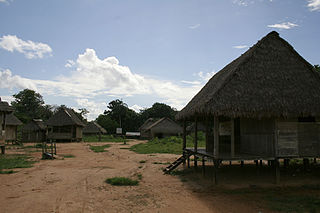Related Research Articles

Uyuni is a city in the southwest of Bolivia.

Omasuyos or Uma Suyu is a province in the La Paz Department in Bolivia. Its capital is Achacachi.

This is a list of the 50 largest cities in the Americas by population residing within city limits as of 2015, the most recent year for which official population census results, estimates, or short-term projections are available for most of these cities. These figures do not reflect the population of the urban agglomeration or metropolitan area which typically do not coincide with the administrative boundaries of the city. For a list of the latter, see List of metropolitan areas in the Americas by population. These figures refer to mid-2015 populations with the following exceptions:
- Mexican cities, whose figures derive from the 2015 Intercensal Survey conducted by INEGI with a reference date of 15 March 2015;
- Calgary, whose 2015 municipal census had a reference date of April 1.
- Brazilian cities, whose figures originate from the 2021 estimate given by the IBGE, with a reference date of July 1, 2021.

The Indigenous peoples of South America or South American Indigenous peoples, are the pre-Columbian peoples of South America and their descendants. These peoples contrast with South Americans of European ancestry and those of African descent.
Leco, also written as Leko, is a language isolate that, though long reported to be extinct, is spoken by 20–40 individuals in areas east of Lake Titicaca, Bolivia. The Leco ethnic population was 13,527 in 2012.
Reyesano, or Chirigua (Chiriba), is a nearly extinct Tacanan language that was spoken by only a few speakers, including children, in 1961 in Bolivia. It is spoken by the Maropa people who number 4,505 in 2012.

Bolivians are people identified with the country of Bolivia. This connection may be residential, legal, historical or cultural. For most Bolivians, several of these connections exist and are collectively the source of their being Bolivian.

Santa Cruz de la Sierra is a municipality located in the province of Cáceres and autonomous community of Extremadura, Spain. The municipality covers an area of 44.6 square kilometres (17.2 sq mi) and as of 2011 had a population of 278 people.
Guarayu is a Tupian language of Bolivia that is spoken by the Guarayo people who number 23,910 in 2012.

The Ese Ejja are an indigenous people of Bolivia and Peru, in the southwestern Amazon basin. 1,687 Ese Ejja live in Bolivia, in the Pando and Beni Departments, in the foothills along the Beni and the Madre de Dios Rivers. In Peru, they live along the Tambopata and Heath Rivers, near Puerto Maldonado.
The Machinere are an indigenous people of Brazil, Bolivia, and Peru. They live along the Acre River in Bolivia. In Brazil they mostly live in the Mamoadate Indigenous Territory, although some live in the Chico Mendes Extractivist Reserve, both in Acre.
The Baure people are an ethnic group who live in the Beni Department of Bolivia. There were 3,328 of them according to the 2012 census of which 58 spoke the Baure language natively.
The Canichana people are an ethnic group in the Beni Department of Bolivia. There were 899 of them in 2012. 1,253 people speak the Canichana language natively.
The Cayubaba people are an ethnic group in the Beni Department of Bolivia. There were 2,203 of them in 2012 of whom 1,246 speak the Cayubaba language natively.
The Itonama people are an ethnic group in northeastern Bolivia. They numbered 16,158 in 2012 with 1,249 people speaking the Itonama language natively.
The Maropa People are an ethnic group in Bolivia. There were 4,505 of them in 2012 of whom 57 speak the Maropa language natively.
The Movima people are an ethnic group in Bolivia. There were 18,879 of them in 2012 of whom 675 speak the Movima language natively.
References
- ↑ Carrasco Piloy, José (May 2016). Roca Ortiz, Carla (ed.). Música, danza y comida de la nación leco (PDF) (in Spanish). Santa Cruz de la Sierra - Bolivia: Instituto de Lengua y Cultura Leco. pp. 31–32. Retrieved 21 September 2023.
- ↑ "Censo de Población y Vivienda 2012 Bolivia Características de la Población". Instituto Nacional de Estadística, República de Bolivia. p. 29.